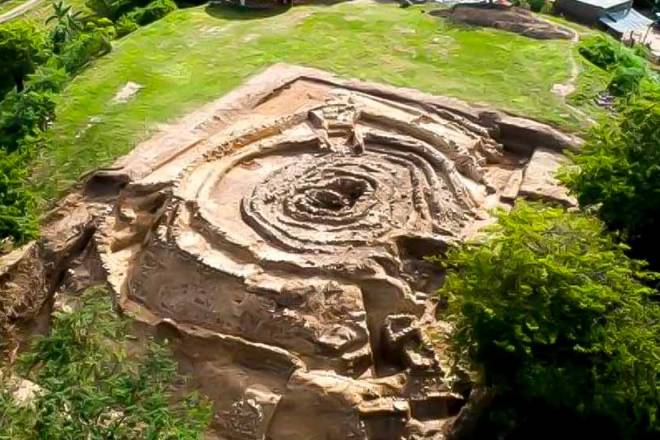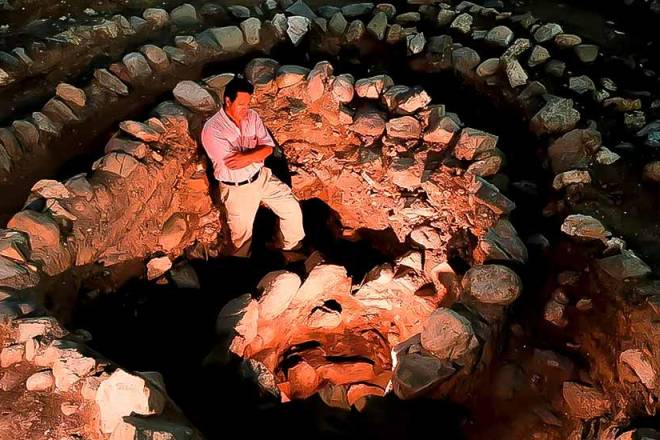The world will get to know Huaca Montegrande, where history's oldest cacao was found
Huaca Montegrande, the place where the oldest cacao in history was found (over 5,300 years old) —located in Jaen province, Cajamarca region's Amazonian jungle— will be known by the world thanks to a documentary produced by PBS —a public television network in the United States.
The PBS film crew is led by renowned British-Canadian anthropologist and documentary filmmaker Graham Townsley. The team is already in Jaen. One of the protagonists of this documentary is Peruvian archaeologist Quirino Olivera —discoverer of Huaca Montenegro.
Also participating in this visit is Brazilian Eduardo Neves —one of the world's top specialists in Amazonian archaeology.
The team, whose members arrived in Jaen on February 26, will stay there until March 4.
Olivera led the group of archaeologists composed of Peruvian and Ecuadorian citizens, who began excavations on both sides of the border back in 2009.
In 2012, Peruvian researchers found a "spiral-shaped architecture" in Jaen. Olivera believes that time has the shape of a coiled serpent —an important symbol found in nearby sites.
"It has the shape of the Nasca monkey tail, the spiral of Peru Brand," he pointed out.
The architecture is surrounded by "outstretched arms" that wrap the whole towards the center of the spiral, where there is supposed to be a tomb.
A similar archaeological site was found a short time later in Ecuador.
In 2014, the team unearthed the Montegrande archaeological temple, under an abandoned modern Catholic church, which was a dump and smokehouse —just five minutes from the city of Jaen.
In 2016, the Peru-Ecuador Binational Plan contributed S/80,000 (about US$22,857) to the project; another S/100,000 (about US$28,571) was financed by the Provincial Municipality of Jaen. With that money progress was made to show details of the beautiful temple.


